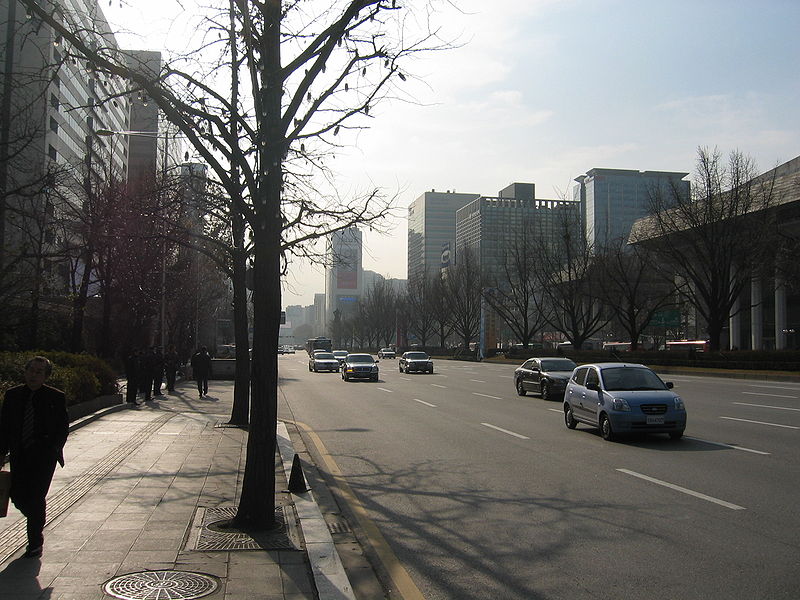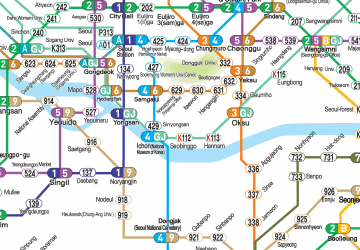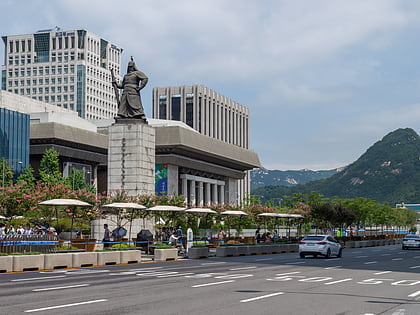Sejongno, Seoul


Facts and practical information
Sejongno, a prominent thoroughfare in the heart of Seoul, South Korea, stands as a testament to the country's rich history and modern development. Stretching through the Jongno District, this street is named after King Sejong the Great, a revered ruler known for his contributions to Korean culture, most notably the creation of the Korean alphabet, Hangul.
As a central axis of the city, Sejongno is not only a hub for transportation but also a cultural artery that pulses with the life of Seoul. The street is lined with government buildings, including the majestic Gyeongbokgung Palace, which serves as a historical backdrop to the bustling urban environment. The area is also home to the statues of King Sejong and Admiral Yi Sun-sin, both iconic figures in Korean history.
Sejongno's significance extends beyond its historical landmarks. It is a focal point for public gatherings, parades, and cultural events, reflecting the dynamic spirit of Seoul. The wide boulevards are often filled with locals and tourists alike, who come to experience the blend of traditional and contemporary attractions.
Accessibility to Sejongno is effortless, with several subway stations along its route, ensuring that the street is well-connected to the rest of the city. Whether it's for sightseeing, attending government offices, or simply enjoying a leisurely walk, Sejongno offers a unique glimpse into the soul of Seoul.
The street's importance is further highlighted by its proximity to Cheonggyecheon, a modern public recreation space in downtown Seoul. This restored stream has become a symbol of urban renewal and environmental consciousness, drawing a stark contrast to the bustling cityscape that surrounds it.
175 세종대로종로구 (사직동)Seoul
Sejongno – popular in the area (distance from the attraction)
Nearby attractions include: Deoksugung, Gyeonghuigung, Gwanghwamun, Jogyesa.
Frequently Asked Questions (FAQ)
Which popular attractions are close to Sejongno?
How to get to Sejongno by public transport?
Metro
- 광화문 • Lines: 5 (2 min walk)
- Gyeongbokgung • Lines: 3 (8 min walk)
Bus
- Gwanghwamun • Lines: 600, 9709 (4 min walk)
- Seoul History Museum • Lines: 9709 (7 min walk)

 Metro
Metro









